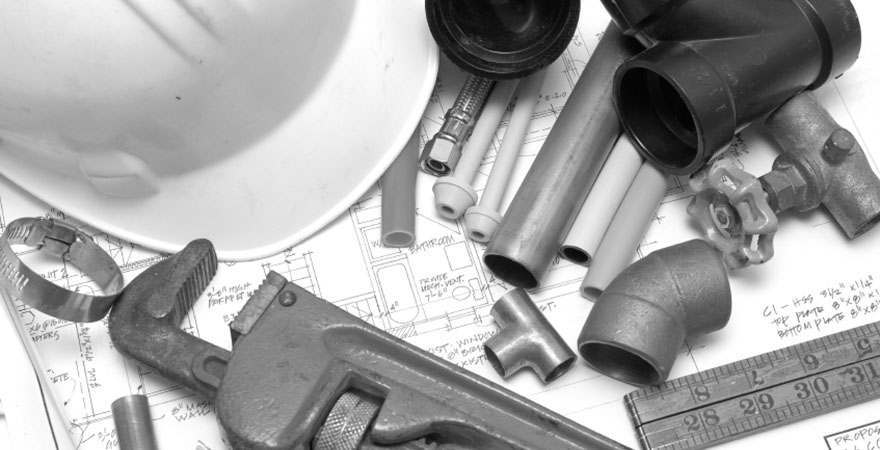A Little Plumbing History – Where it began and where it is now
Oh, the miracle of modern day plumbing, you can turn on your tap and instantly have running water delivered at your command. Hot water for showers, cold water for drinking, and even room temp water can be attained with a mere turn of the wrist. Pull the plug on a sink full of dirty dishwater and it is magically whisked away.
The same can be said for the bathroom or lavatory; push down a handle and whoosh, there goes the waste. What could be easier? It wasn’t always so easy however.
Before the advent of plumbing, people bathed in rivers, creeks and streams, and took care of their personal business outdoors as well. That same river or stream was also the source of drinking water for many, and with poor or no sanitation; disease spread, and for centuries, water borne illness was the cause of death for millions.
When in Rome
It was different for the citizens of Rome however. Rome, having nearly one million inhabitants at its peak knew that a source of fresh water was paramount to its survival and created aqueducts and systems of water relocation that changed the world. There systems of underground tunnels ensured that fresh water was delivered and wastewater flowed out of the city, good for Rome not so good the rivers.
While some have credited the Romans with inventing plumbing, that isn’t entirely accurate. Archeologists digging on the Island of Crete, the largest island in Greece, discovered ancient plumbing systems dating back some 3000 years. In addition, copper water pipes were discovered in a palace in India dating back 4000 to 3000 BC.
The Romans are responsible however, for creating the most efficient and effective systems of plumbing ever known with principals still in use today. Their aqueducts were marvels of engineering genius and efficiency. The famous Aqua Marcia aqueduct alone carried water a remarkable 60 miles from the mountains to the city of Rome supplying water for drinking, bathing and sanitation purposes some 2000 years ago.
The Etymology of the Word Plumbing
The word plumbing derives its name from the Latin word plumbum, or “liquid silver”. The Anglo Saxon name for this liquid silver is lead. Many of Rome’s aqueducts were lined with lead or plumbum and a new science was born. Eventually, people with knowledge and expertise in the field of aqueducts, pipes and drains became known as plumbers.
Jump ahead 20 centuries and it’s the 1940’s. While indoor plumbing is becoming more widespread, only about 50% of the people in America have a so-called modern bathroom containing a bathtub, sink and a toilet. Water pipes and drains during that period were mostly made of iron that was susceptible to rust and over the years would prove to be necessary and costly to repair and replace.
A quarter of a century later and copper has become a staple in the plumbing world. Durable and rust resistant, copper was in big demand for plumbers when in 1966 a copper shortage forced plumbing to adapt again and evolve with the advent of pipes and drains made of plastic materials. Less prone to leaks, cracks and damp underground environments, plastic was the new way to plumb.
Plumbing Techniques Continue to Advance
The evolution of plumbing continues to this day with the creation of drainage and sewer pipes of the newest materials that are lighter, stronger, and more environmentally friendly. Today, all the latest technology is being applied by qualified plumbers at the local level.
Advancements in communication offers the ability to instantly communicate with service technicians anywhere in the field increasing response times and making more efficient use of the plumbers’ time by knowing in advance what is needed for the job. This efficiency saves the plumber time and customer money.
The Plumbers’ Helpers
Faster and more effective tools have been created to ensure today’s plumber is well stocked and able to handle any plumbing situation that may arise. From powerful commercial and industrial rooters to Hydro Jetting a storm drain with thousands of pounds per square inch of pressure, today’s’ plumbers are prepared for any situation.
While the plumbers of today may have the ancients to thank as the precursors to modern day plumbing, I have to believe the ancients would likewise marvel at the advancements made in the science of plumbum which they began so many centuries ago.
Odd Facts Related to Plumbing
- A 3000 year old toilet with a crude flushing device was discovered on the Island of Crete
- The first packaged toilet tissue was created in 1857
- People didn’t begin washing with soap until the 1830’s
- Before the toilet was invented, people used water closets
- Some castles of the 17th century had privies that emptied directly into the surrounding moat

